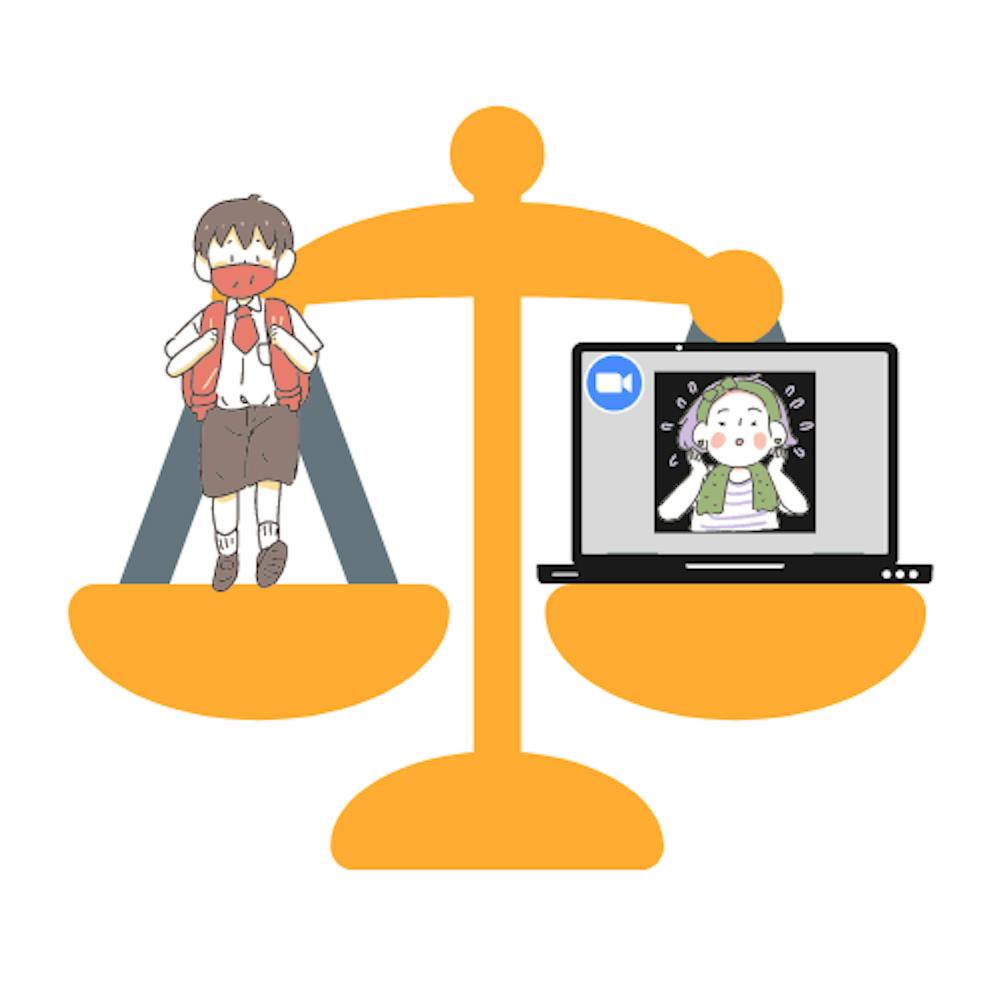Sammy and Louie Proctor are two middle school brothers attending Roland Park Elementary Middle School. While they do not miss the commute or the homework load of in-person learning, they both agree that online learning does have its own unappealing aspects.
While Louie Proctor used to love how his art teacher could help him in real time if he needed it, he mentioned in an email to The News-Letter that it is “so hard to keep up with math online.” Sammy Proctor echoed his brother’s sentiments. While the two boys do have each other during the day, they both miss being able to play with a larger group of friends during recess.
“I would like to go back to school when coronavirus is over or it is safe to go back to the building because I miss my friends,” Louie Proctor wrote.
When asked if they would want to go back to in-person learning right now, both of them expressed some hesitancy.
“I want to go back in person if it was safe,” Sammy Proctor wrote in an email to The News-Letter. “But I don’t think it is right now.”
Sammy and Louie Proctor’s experience is like that of most Baltimore City Public School students. They have been online since March of 2020. On the other end of the country, however, the situation is vastly different. Middle schoolers in Lakeway, Texas, for example, have been in-person since September, continuing regular extracurriculars with added precautions and mask mandates. This is but one example of the nation’s fragmented response to the COVID-19 pandemic.
Annette Anderson and Odis Johnson are faculty at the University’s Center for Safe and Healthy Schools. In interviews with The News-Letter, both stressed the importance of equity when it comes to reopening schools across the nation.
Last month, under a new director, the Centers for Disease Control (CDC) released federal guidelines for reopening schools. Both Anderson and Johnson acknowledged that these guidelines are a great first step in federal leadership of the conversation. While all 50 state departments will continue to conduct research and implement their own policies, the CDC will compile outbreak data from across the country to recommend best practices as schools begin the transition back to in-person learning.
Johnson noted that COVID-19 magnified existing inequities in American education. For example, although disparities in internet access became a large topic of conversation when schools transitioned to wholly virtual learning, this had been an issue long before. Now that these inequities have become more apparent, he doesn’t think that it will be easy to return to the way things were before.
“In order for us to support kids and their learning, even when schools are open, we’re going to have to think more about what it's like being at home and whether kids have access to the resources we assume they should have,” Johnson said.
Anderson highlighted the need to maintain the trust of students’ families during the reopening process. COVID-19 has significantly changed the relationship teachers and parents have to one another.
“I think what I’m actually most surprised by is how prominent parent voices have become in this conversation,” she said. “Parents traditionally have been compliant in what schools say to do historically. COVID flipped that almost overnight.”
Anderson observed that parents of the most vulnerable students have been the most hesitant to return to in-person learning.
“They are the families that have the most to lose, so they are holding fast to this. Districts are going to have to work to build fair trust over time,” she said.
According to an article in The Economist, minority populations may feel like their schools are more poorly equipped to invest in technologies or strategies that would prevent transmission during the school day. The disproportionate impact of COVID-19 on minority groups may also create a greater fear of children bringing the virus home.
While both Anderson and Johnson applauded the CDC guidelines, both of them disagreed with the director’s statement that teacher vaccination was not a prerequisite for in-person learning. Anderson stressed that this would be an important step in ensuring a family’s confidence that their child would be safe and healthy during the school day.
“From a common-sense perspective, a lot of families feel that [this] is important,” she said.
Johnson noted how educators have often been undervalued during the pandemic. Prioritizing them in vaccination, she said, would be a concrete symbol of support during an unprecedented time for the field.
“That leads me to believe that a lot of teachers, if given the opportunity to leave the field, might do so,” he said.
In the process of schools reopening in the fall, some teachers left public education jobs to serve as paid private tutors for so-called pandemic pods, which have magnified educational inequity concerns. Recently, however, community organizations in Boston have implemented free and low-cost learning pods to make this option more accessible to all families. One teacher running a pandemic pod in Providence described having more autonomy over how she ran the classroom and how much time she was able to dedicate to each student.
While reopening schools is an attractive goal, Anderson and Johnson concluded that it is realistic to assume at least some proportion of the population, both domestically and globally, will be learning remotely for quite a while.
In the meantime, Anderson recommended the expansion of the E-Rate program, which offers low-income students reliable internet access, while Johnson hoped that districts could implement more support systems for infected students, even if they are remote.
Whether districts reopen promptly or not, Johnson remarked that the foray into virtual learning will have a profound impact on how the next generation of students receives their education.
“It’s clear that schooling and education pre-COVID is not going to work the way it did post-COVID,” he said.





